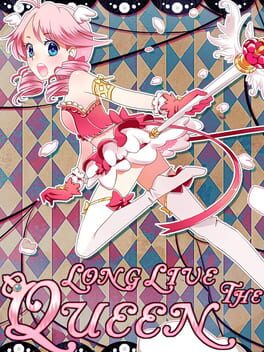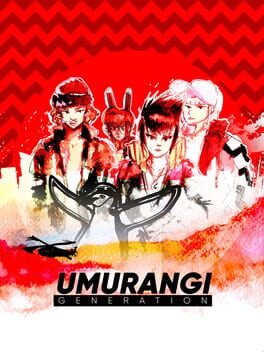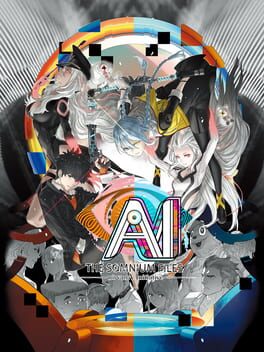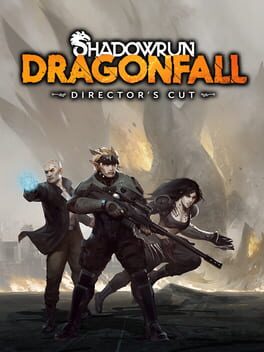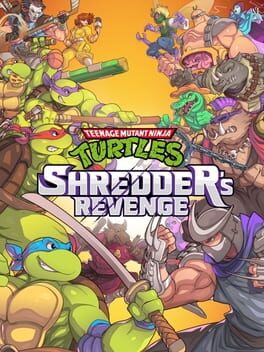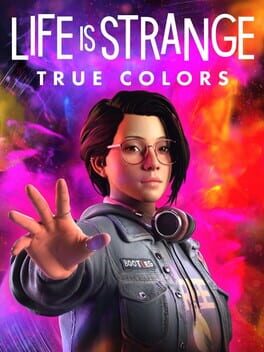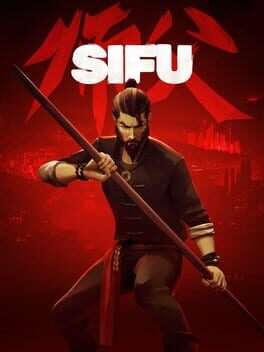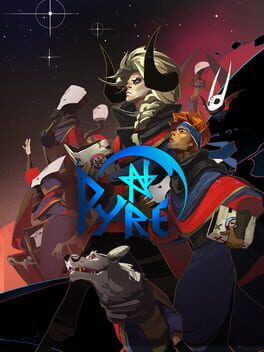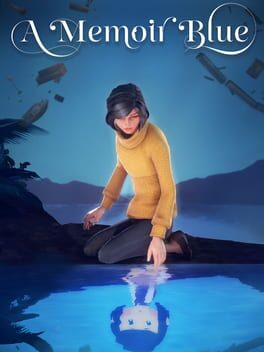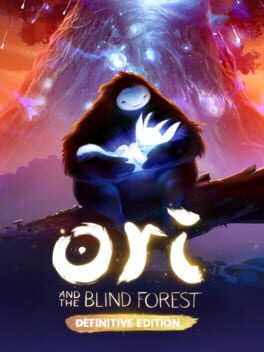Lead
BACKER
2012
A neat VN about trying to keep a queen from dying until her coronation. I liked the concept and there’s a variety of choices and dialogue based on the skills you train in classes, though I’m not sure the majority of them actually made a difference since the death events aren’t randomized and have specific skill checks. You basically need to retry until you correctly figure out the order of skills you’ll need to progress, but it’s short so had a decent time with it
There aren’t many games strictly about taking photos so I found it pretty interesting. Short and does a good job telling its story through the environmental details of each level as it gradually reveals more about its dystopian world (if unsubtly reminiscent of Evangelion). The music and aesthetic were cool too
But I wish I liked how this played more, looking for obscure photo bounties under a timer that were finicky to register when you did find them got tiresome pretty quickly. The jankiness of the controls and platforming didn’t help much either
But I wish I liked how this played more, looking for obscure photo bounties under a timer that were finicky to register when you did find them got tiresome pretty quickly. The jankiness of the controls and platforming didn’t help much either
As a big fan of the first Somnium Files, I was thrilled to hear that not only a sequel was in the works but that Mizuki would be the lead with Aiba this time. I was initially curious how this would follow the first given that its story ended pretty definitively, but for the most part it’s unrelated to its events as it tackles a different standalone case
Newcomers can even opt to omit any mention of spoilers for the first game, though I would highly recommend playing it beforehand cause it’s great and you’ll have a better connection with the characters. How this new case matches up in comparison I won’t get into too much detail as with these games it’s best to go in as blind as possible, but it has a similar level of intrigue and I came away impressed in the direction it goes
That said, as a mystery I think it was a bit weaker than the first simply because it was less connected to the main characters themselves. And as a result it felt kinda messy by the end? It also got a little boring constantly going around to the same few areas looking for bits of info this time since a lot of the original cast weren’t as relevant to the case as they were before
The dialogue is about the same quality though, a lot of it is still very funny but also pretty horny as Uchikoshi’s writing tends to be. But I personally didn’t mind, and the banter between the characters remains the best thing about Somnium Files for me. This goes for Mizuki/Aiba but also the new protagonists Ryuki and Tama, who fit right into the cast and have a dynamic that’s just as entertaining. Special mention to the dub performances too, it’s as excellent as before and the line delivery makes the humor even better
A particular flaw of the first was the gameplay portion where you jump into Somniums, which as a concept had charm and heart but to me felt more like a annoyance to go through than anything. That was improved here as they’ve been given a bigger focus on variety and solving logic puzzles instead of just the trial and error investigating of the first. There’s also cool portions where you can reenact the crime scene which does more for the gameplay. Though could’ve done without the QTE action parts where they fight a bunch of randoms who all have the same model, they still aren’t good and felt like a waste of time
I’m not sure I’d say it matches the first overall as I feel the core mystery and character connection weren’t as good as before, but Nirvana Initiative does still manage to surprise in its own interesting ways and I still love the characters just as much
Newcomers can even opt to omit any mention of spoilers for the first game, though I would highly recommend playing it beforehand cause it’s great and you’ll have a better connection with the characters. How this new case matches up in comparison I won’t get into too much detail as with these games it’s best to go in as blind as possible, but it has a similar level of intrigue and I came away impressed in the direction it goes
That said, as a mystery I think it was a bit weaker than the first simply because it was less connected to the main characters themselves. And as a result it felt kinda messy by the end? It also got a little boring constantly going around to the same few areas looking for bits of info this time since a lot of the original cast weren’t as relevant to the case as they were before
The dialogue is about the same quality though, a lot of it is still very funny but also pretty horny as Uchikoshi’s writing tends to be. But I personally didn’t mind, and the banter between the characters remains the best thing about Somnium Files for me. This goes for Mizuki/Aiba but also the new protagonists Ryuki and Tama, who fit right into the cast and have a dynamic that’s just as entertaining. Special mention to the dub performances too, it’s as excellent as before and the line delivery makes the humor even better
A particular flaw of the first was the gameplay portion where you jump into Somniums, which as a concept had charm and heart but to me felt more like a annoyance to go through than anything. That was improved here as they’ve been given a bigger focus on variety and solving logic puzzles instead of just the trial and error investigating of the first. There’s also cool portions where you can reenact the crime scene which does more for the gameplay. Though could’ve done without the QTE action parts where they fight a bunch of randoms who all have the same model, they still aren’t good and felt like a waste of time
I’m not sure I’d say it matches the first overall as I feel the core mystery and character connection weren’t as good as before, but Nirvana Initiative does still manage to surprise in its own interesting ways and I still love the characters just as much
I didn’t know much about the Shadowrun IP before this, the most I remember about it was playing that multiplayer shooter in 2007 which seemed to be quickly forgotten. But now the franchise was revived as a series of CRPGs that focus more heavily on the narrative potential of its world and characters. And after playing it’s clear that was the right direction since Shadowrun’s universe does really stand out with its interesting mix of cyberpunk and fantasy elements
Dragonfall is the second entry set in Berlin, though it’s standalone and from what I’ve seen was the recommended starting point. The main story itself was solid, but it was the character interactions that make up the best part about the game
While there’s no voice acting, dialogue is well written and your companions are all interesting to talk to and learn more about after each run. The quality of the quests is pretty strong too, and it’s fairly concise for an RPG like this at about 20 hours or so. There’s a limited amount to do, but it’s all worthwhile and some of the quests tie into your companions and their backstory
The turn based combat is basically the same as XCOM, especially having your characters often miss their high hit chances as that’s known for… Mechanically it’s solid, though my issue with this type of combat system is when you’re fighting a bunch of enemies at once and have to slowly watch everyone make their turn animations over and over, which always gets tiring. A way to speed this up would’ve been appreciated, but otherwise combat was fine
And aside for some clunky inventory management and minor bugs, the console port was polished and translated pretty well to a controller
Dragonfall is the second entry set in Berlin, though it’s standalone and from what I’ve seen was the recommended starting point. The main story itself was solid, but it was the character interactions that make up the best part about the game
While there’s no voice acting, dialogue is well written and your companions are all interesting to talk to and learn more about after each run. The quality of the quests is pretty strong too, and it’s fairly concise for an RPG like this at about 20 hours or so. There’s a limited amount to do, but it’s all worthwhile and some of the quests tie into your companions and their backstory
The turn based combat is basically the same as XCOM, especially having your characters often miss their high hit chances as that’s known for… Mechanically it’s solid, though my issue with this type of combat system is when you’re fighting a bunch of enemies at once and have to slowly watch everyone make their turn animations over and over, which always gets tiring. A way to speed this up would’ve been appreciated, but otherwise combat was fine
And aside for some clunky inventory management and minor bugs, the console port was polished and translated pretty well to a controller
Don’t have much to say on this since it’s short and simple, but was a fun beat em’ up. The aesthetic and sprites do a great job replicating the old school TMNT arcade games, and it plays as well as you’d expect. The flying enemies were a bit annoying to fight though, most attacks didn’t seem to register as well
2022
Citizen Sleeper revolves around playing as a Sleeper, those who gave their lives to work for corporations by becoming synthetic copies of their original selves. You decided to escape from those you worked for and need to pick yourself up from the bottom, trying to survive and build a new life as you hide out on a rundown but lively space station called Erlin’s Eye. All the while you’re constantly being tracked and your body is rapidly deteriorating
The gameplay is part narrative RPG akin to Disco Elysium (where actions are determined by dice rolls) and part resource management. With each limited cycle, much of the game is spent scrambling to find ways to make money to survive, exploring the various parts of the ship and meeting new people with their own drives to pursue. While also learning more about the station and the world itself through the game’s descriptive dialogue
Eventually it becomes much more manageable as you upgrade your character and gather various rewards from those you meet with regularly. Though you’ll start to exhaust most of what the game has to offer and still need to wait for events to trigger or items to appear after multiple cycles, which did get a little tedious. By the end though, Erlin’s Eye actually started to feel like home for the small amount of time you’ll spend on it
The gameplay is part narrative RPG akin to Disco Elysium (where actions are determined by dice rolls) and part resource management. With each limited cycle, much of the game is spent scrambling to find ways to make money to survive, exploring the various parts of the ship and meeting new people with their own drives to pursue. While also learning more about the station and the world itself through the game’s descriptive dialogue
Eventually it becomes much more manageable as you upgrade your character and gather various rewards from those you meet with regularly. Though you’ll start to exhaust most of what the game has to offer and still need to wait for events to trigger or items to appear after multiple cycles, which did get a little tedious. By the end though, Erlin’s Eye actually started to feel like home for the small amount of time you’ll spend on it
I thought the first Life is Strange was pretty good despite its flaws and True Colors was closer to that for me than LiS 2 was (which I still need to finish). Though it was definitely kinda short and a bit rushed.
Alex was a good character, and while her power to tap into emotions wasn’t quite as interesting as rewinding time, it made her more earnest in comparison and I enjoyed the interactions she had with the people of Haven Springs. I was into the game’s more comfortable small town vibe too even if there wasn’t much to explore in it. The rest of the cast was decent and the facial animations definitely improved a lot over past games, though some of the dialogue still seemed a bit stilted to me.
The plot itself was okay. It sets up a mystery surrounding Alex’s brother and his circumstances with the first two chapters which was interesting, but I thought it didn’t really get much focus after until the last chapter where it just speeds through the climax of the story. Instead the pacing would slow to a crawl as you’re forced through tasks like a LARP that lasts up to an hour in Chapter 3. And your choices barely make any difference, but I don’t expect otherwise from these games at this point.
Alex was a good character, and while her power to tap into emotions wasn’t quite as interesting as rewinding time, it made her more earnest in comparison and I enjoyed the interactions she had with the people of Haven Springs. I was into the game’s more comfortable small town vibe too even if there wasn’t much to explore in it. The rest of the cast was decent and the facial animations definitely improved a lot over past games, though some of the dialogue still seemed a bit stilted to me.
The plot itself was okay. It sets up a mystery surrounding Alex’s brother and his circumstances with the first two chapters which was interesting, but I thought it didn’t really get much focus after until the last chapter where it just speeds through the climax of the story. Instead the pacing would slow to a crawl as you’re forced through tasks like a LARP that lasts up to an hour in Chapter 3. And your choices barely make any difference, but I don’t expect otherwise from these games at this point.
2022
Sifu’s a kung-fu beat ‘em up that has a stance based combat system similar to Sekiro, where learning to dodge and parry attacks is essential to overcoming difficult enemies and bosses. And just the same, it’s very unforgiving until enough time is spent getting used to its levels and mechanics.
In addition there’s a roguelike element to it where each death will make your character older. Giving you greater damage but less health until you get too old to fight and have to start over, losing the progress of the level and any skills up to that point that haven’t been unlocked permanently. Initially I wasn’t sure I would like this as losing significant playtime is the one thing that can be a turn off for roguelike games, but in practice it’s much more tolerable.
Aging carries over to the next level, and starting over will only set you back to the start of that level with the same age. And since the game has shortcuts, you can retry and just skip through much of the level if you’ve already reached that point before.
But because the combat gets more complicated as you progress, it’s encouraged to go back through prior levels and try to pass them without dying to maintain a young age (for more lives) up to the final level. And it’s worth it as I kept replaying and gradually improved more and more until I was flying through them with minimal deaths all the way to the end.
I really liked the art style too. It’s like a mix of cell shaded characters and environments with realistic looking lighting, and some of the locations are very cool like the third level.
I did have some issues though. While the combat’s very enjoyable, I’m not sure it was as tightly designed as I would’ve liked. Parries and dodges can feel inconsistent with different enemy types, and it can be a bit too hard to telegraph some attacks especially with bosses.
There’s also a story here, but it’s not really fleshed out enough to take notice. Your father was killed and you take revenge by going after the ones responsible. That’s about it really, you get some information about the characters through a detective board but they don’t have much substance to them beyond the premise. The focus is mainly on their designs and fights though so I didn’t mind.
Had a ton of fun with this. When looking at its five levels altogether it’s actually a pretty short game, but the amount of time you’ll spend trying to master each one adds a lot of replayability to it.
In addition there’s a roguelike element to it where each death will make your character older. Giving you greater damage but less health until you get too old to fight and have to start over, losing the progress of the level and any skills up to that point that haven’t been unlocked permanently. Initially I wasn’t sure I would like this as losing significant playtime is the one thing that can be a turn off for roguelike games, but in practice it’s much more tolerable.
Aging carries over to the next level, and starting over will only set you back to the start of that level with the same age. And since the game has shortcuts, you can retry and just skip through much of the level if you’ve already reached that point before.
But because the combat gets more complicated as you progress, it’s encouraged to go back through prior levels and try to pass them without dying to maintain a young age (for more lives) up to the final level. And it’s worth it as I kept replaying and gradually improved more and more until I was flying through them with minimal deaths all the way to the end.
I really liked the art style too. It’s like a mix of cell shaded characters and environments with realistic looking lighting, and some of the locations are very cool like the third level.
I did have some issues though. While the combat’s very enjoyable, I’m not sure it was as tightly designed as I would’ve liked. Parries and dodges can feel inconsistent with different enemy types, and it can be a bit too hard to telegraph some attacks especially with bosses.
There’s also a story here, but it’s not really fleshed out enough to take notice. Your father was killed and you take revenge by going after the ones responsible. That’s about it really, you get some information about the characters through a detective board but they don’t have much substance to them beyond the premise. The focus is mainly on their designs and fights though so I didn’t mind.
Had a ton of fun with this. When looking at its five levels altogether it’s actually a pretty short game, but the amount of time you’ll spend trying to master each one adds a lot of replayability to it.
2017
Much like Supergiant’s other titles, Pyre’s biggest strength is the sheer quality of its presentation and distinct art direction. The backgrounds constantly burst with flair and color, and every single character is excellently designed. Visually it’s wonderful to look at, and the great music is a standout too.
Though as a game it’s quite a bit different, an odd cross between a text heavy visual novel and sports. Where you, the Reader, meet a group of characters who strive to free everyone from their prison by tossing a ball around in a series of matches against other teams. And by everyone that’s meant literally, each character will eventually have a chance to escape through final Liberation Rites, with the goal of slowly getting every last person out one by one.
Narratively this structure works in its favor, as most of the time is spent strengthening and learning more about your party members, so that when you do eventually set them free it feels more bittersweet. This also extends to your opponents, who all have their own stories for why they were sent to the Downside and what they want to reclaim. With each new match, they get stronger but also more sympathetic too. Losing a match never ends the game either, but continues on with the closer chance at freedom given to the opposing team instead.
It does result in a lengthier game than it probably could’ve been though, as the gameplay doesn’t really change much from start to finish. You complete a few rites (traveling to each one), tackle the Liberation Rite and release a party member, then repeat with a new phase until the end. While the matches gradually ramp up in difficulty to keep it interesting, I definitely felt the repetition after a while.
But overall the unique concept works very well. It’s an exceedingly polished game same as all the others from this dev, set in an interesting world with memorable characters, a gorgeous style, and a great soundtrack.
Though as a game it’s quite a bit different, an odd cross between a text heavy visual novel and sports. Where you, the Reader, meet a group of characters who strive to free everyone from their prison by tossing a ball around in a series of matches against other teams. And by everyone that’s meant literally, each character will eventually have a chance to escape through final Liberation Rites, with the goal of slowly getting every last person out one by one.
Narratively this structure works in its favor, as most of the time is spent strengthening and learning more about your party members, so that when you do eventually set them free it feels more bittersweet. This also extends to your opponents, who all have their own stories for why they were sent to the Downside and what they want to reclaim. With each new match, they get stronger but also more sympathetic too. Losing a match never ends the game either, but continues on with the closer chance at freedom given to the opposing team instead.
It does result in a lengthier game than it probably could’ve been though, as the gameplay doesn’t really change much from start to finish. You complete a few rites (traveling to each one), tackle the Liberation Rite and release a party member, then repeat with a new phase until the end. While the matches gradually ramp up in difficulty to keep it interesting, I definitely felt the repetition after a while.
But overall the unique concept works very well. It’s an exceedingly polished game same as all the others from this dev, set in an interesting world with memorable characters, a gorgeous style, and a great soundtrack.
Ultra Deluxe is still The Stanley Parable and holds up as the funny, cleverly written game it was nearly a decade ago. But now with console ports and new content that pokes fun at itself and how game trends have changed since 2013, pleasantly surprising just as much as the base version did. However for how the content’s been pushed and the larger price tag, I’m not sure I’d say it was substantial enough to stand on its own. But as an addition to an already good game, it’s well worth playing.
Also you can carry a reassurance bucket everywhere so clearly it’s the definitive experience.
Also you can carry a reassurance bucket everywhere so clearly it’s the definitive experience.
2022
2019
2022
A lovely homage to the early Zelda games that’s well polished, and has its own unique spin on the top-down adventure that makes it stand out despite its influence.
The best way to describe it is vague. It doesn’t tell much of anything about itself, and it just sets you off without direction with only a stick to fight with. Then you’ll see the game’s text isn’t actually readable, and any information you’ll want to know about its mechanics or hints on what to do is found through missing pages of an old school instruction manual.
The manual is a neat concept since it’s still cryptic and you’ll have to pay close attention to its drawings to understand it. The level of detail in its visual design is both cool to look at and essential to navigating through the game’s areas and finding obscure secrets.
The art and ambient music are also wonderful, and the level design is excellent. There’s so many clever shortcuts and paths hidden in plain sight that can actually bypass much of the game in hindsight. Most of it isn’t gated either, so progression can just depend on if you know it’s there or not which was awesome.
Though combat isn’t really a highlight since it’s simplistic and kinda floaty, which doesn’t really match with how aggressive the bosses can be. And the other gripe I had was its final puzzle felt excessively obtuse to me on a mechanical level compared to the rest of the game. But overall was super impressed with Tunic.
The best way to describe it is vague. It doesn’t tell much of anything about itself, and it just sets you off without direction with only a stick to fight with. Then you’ll see the game’s text isn’t actually readable, and any information you’ll want to know about its mechanics or hints on what to do is found through missing pages of an old school instruction manual.
The manual is a neat concept since it’s still cryptic and you’ll have to pay close attention to its drawings to understand it. The level of detail in its visual design is both cool to look at and essential to navigating through the game’s areas and finding obscure secrets.
The art and ambient music are also wonderful, and the level design is excellent. There’s so many clever shortcuts and paths hidden in plain sight that can actually bypass much of the game in hindsight. Most of it isn’t gated either, so progression can just depend on if you know it’s there or not which was awesome.
Though combat isn’t really a highlight since it’s simplistic and kinda floaty, which doesn’t really match with how aggressive the bosses can be. And the other gripe I had was its final puzzle felt excessively obtuse to me on a mechanical level compared to the rest of the game. But overall was super impressed with Tunic.
For me the allure of Zero Dawn as a new IP was the novelty of its world. Figuring out where the robot dinos came from, learning about Aloy and the tribal civilizations, the “Old Ones”, etc. Despite its flaws it effectively built up its sci-fi mysteries throughout and they were mostly given a satisfying answer by the end. Forbidden West continues from there and tries to expand more on Aloy herself and the people she encounters.
The gameplay is pretty much the same aside for some changes to combat and traversal. Fighting the machines is still really fun, and figuring out how to take on all the new variations is the best thing about the game. That said, combat with humans (which there’s a lot of) is still dull, and using melee isn’t much better than it was. They also claimed the climbing would be greatly improved and more free form in comparison, sort of? Honestly I thought it was somewhat worse since it could be really janky to control at times, though the addition of a glider was good.
I feel like the story in this one wasn’t as interesting without the intrigue of its world-building to push it forward. It does try to address Zero Dawn’s biggest flaw to me which was the characters, by making the cast more involved and giving you a base to interact with them between missions. But they still aren’t particularly memorable and the villains are especially boring here. At least the dialogue isn’t as stilted since the cutscene animations are far better than the first.
I did enjoy the side quests though. I don’t remember Zero Dawn’s standing out much at all, but these are more involving and have their own cutscenes akin to the main story, so actually wanted to do the majority of them. The other world activities aside for that (like errands and the generic outposts to clear) are still bland, though you can turn their map icons off and just ignore them at least.
Overall Forbidden West is a fine sequel. The visuals and music continue to be great and there’s better environmental variety. The ranged combat remains the highlight, and they improved on some of the first’s flaws like the side quests and animations pretty well. But it’s let down by how iterative it is, and it doesn’t really do much to justify its story imo.
The gameplay is pretty much the same aside for some changes to combat and traversal. Fighting the machines is still really fun, and figuring out how to take on all the new variations is the best thing about the game. That said, combat with humans (which there’s a lot of) is still dull, and using melee isn’t much better than it was. They also claimed the climbing would be greatly improved and more free form in comparison, sort of? Honestly I thought it was somewhat worse since it could be really janky to control at times, though the addition of a glider was good.
I feel like the story in this one wasn’t as interesting without the intrigue of its world-building to push it forward. It does try to address Zero Dawn’s biggest flaw to me which was the characters, by making the cast more involved and giving you a base to interact with them between missions. But they still aren’t particularly memorable and the villains are especially boring here. At least the dialogue isn’t as stilted since the cutscene animations are far better than the first.
I did enjoy the side quests though. I don’t remember Zero Dawn’s standing out much at all, but these are more involving and have their own cutscenes akin to the main story, so actually wanted to do the majority of them. The other world activities aside for that (like errands and the generic outposts to clear) are still bland, though you can turn their map icons off and just ignore them at least.
Overall Forbidden West is a fine sequel. The visuals and music continue to be great and there’s better environmental variety. The ranged combat remains the highlight, and they improved on some of the first’s flaws like the side quests and animations pretty well. But it’s let down by how iterative it is, and it doesn’t really do much to justify its story imo.
